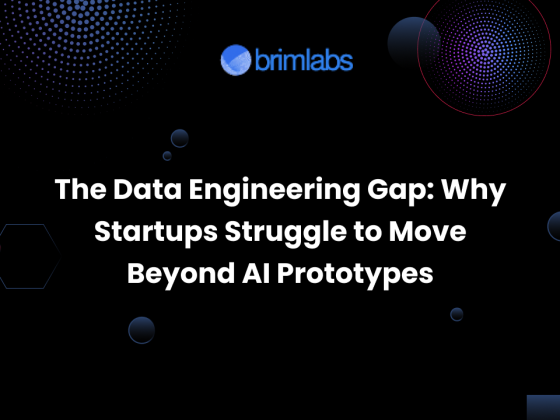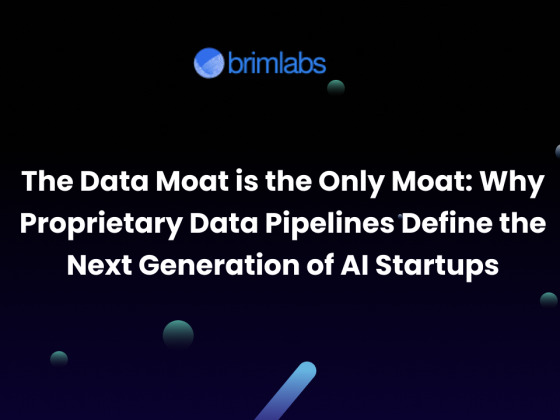AI is booming. Startups everywhere are rushing to build intelligent tools, from copilots and chatbots to fraud detection engines. But beneath all that hype lies a hard truth: the majority of AI startups fail not because of their models, but because of their data.
Data is messy, scarce, expensive, and legally sensitive. And unless handled right, it becomes the biggest roadblock between an idea and a successful AI product.
In this blog, we’ll explore why data remains the #1 bottleneck for AI startups and how successful companies are solving this with practical, proven strategies.
Why Data Breaks AI Startups
1. Too Little or Too Noisy
Startups rarely have access to large, clean, domain-specific datasets. The data they collect is often unlabeled, inconsistent, or full of edge cases, making it hard to train reliable models.
2. Lack of Public Datasets for Niche Use Cases
AI startups in legal tech, healthcare, or enterprise SaaS often work on domain-specific problems for which there are no quality public datasets available.
3. Compliance and Data Privacy
Handling personal or regulated data (health records, financial info, etc.) involves legal, ethical, and infrastructure burdens that most early-stage teams aren’t equipped to manage.
4. Annotation is Expensive
Manual data labeling, especially in areas like NLP or image recognition, requires domain expertise and significant resources, something many startups can’t afford in early stages.
5. Data Drift Happens Fast
After deployment, models face real-world variability. Without ongoing data collection, monitoring, and retraining, models degrade and lose accuracy quickly.
The Real Cost of Ignoring Data
Many AI startups waste time and capital trying to “fix it later.” But in reality:
- Up to 80% of AI engineering time goes to data prep
- Poor training data leads to underperforming MVPs
- Lack of model monitoring causes customer-facing failures
- Mishandled data can trigger legal and compliance risks
How Startups Can Fix the Data Problem
Here are six effective strategies AI startups can use to build smarter, data-first products, along with real examples from startups that did it right.
1. Start Narrow, Then Expand
Focus on a single use case and collect structured, high-quality data for that specific function. Build tight feedback loops and expand only after achieving reliable performance.
Example: Replika
Replika began as an emotional support chatbot, focused solely on simple, intimate one-on-one conversations. This narrow use case helped them collect targeted, high-quality conversational data before expanding features.
2. Use Synthetic Data to Fill Gaps
Synthetic data can simulate rare or hard-to-capture scenarios, improving model robustness without the need for risky or expensive data collection.
Example: Waymo
Waymo generates synthetic driving scenarios, like pedestrians suddenly crossing or unusual lighting conditions, to train their autonomous driving models more efficiently.
3. Partner with Data-Rich Organizations
Collaborate with hospitals, banks, or enterprises that already have high-quality, labeled datasets. Provide value in exchange, such as analytics, tools, or co-development.
Example: Owkin (Health AI)
Owkin partnered with top European hospitals to access anonymized patient data for cancer research, allowing them to build models with strong medical relevance while staying compliant.
4. Fine-Tune Pre-Trained Models
Use foundational models like GPT, BERT, or Stable Diffusion and fine-tune them on your niche dataset. This drastically reduces the data and compute needed to get started.
Example: Hugging Face Ecosystem
Startups across industries use Hugging Face’s open-source models and apply transfer learning to create domain-specific solutions with minimal custom data.
5. Outsource Annotation with Quality Control
Leverage trusted third-party platforms for annotation, with strong QA workflows to ensure consistency across labeled datasets.
Example: Brex with Scale AI
Brex outsourced annotation of transaction data to Scale AI to train fraud detection models, using clear guidelines and QA loops to ensure quality and speed.
6. Adopt ModelOps from Day One
Use tools that monitor data drift, track model performance, and trigger retraining workflows automatically.
Example: Chime with Arize AI
Chime integrates Arize AI to track how their models perform in production, allowing them to detect performance dips and retrain before customer experience is impacted.
Key Takeaway
AI startups don’t fail because they can’t build models; they fail because they can’t build good data foundations.
Whether it’s messy collection, lack of domain coverage, or weak monitoring, the only way to scale AI is to treat data pipelines, labeling, privacy, and drift detection as core infrastructure, not a side task.
Final Thoughts
Building with AI? Then your real product is your data.
At Brim Labs, we help startups turn their raw or limited datasets into production-ready pipelines. From fine-tuning LLMs and building AI agents to setting up scalable, compliant infrastructure, we specialize in solving the data challenge behind the AI product.











